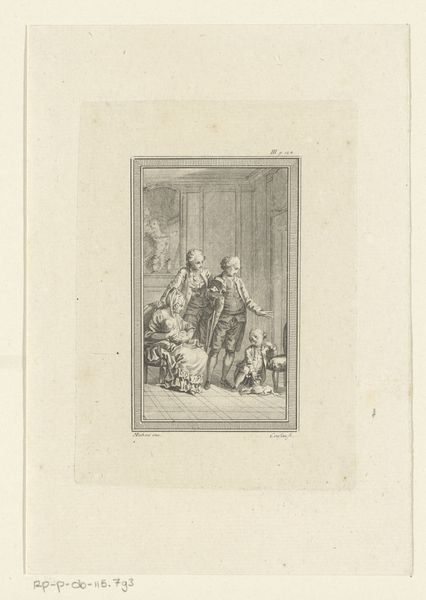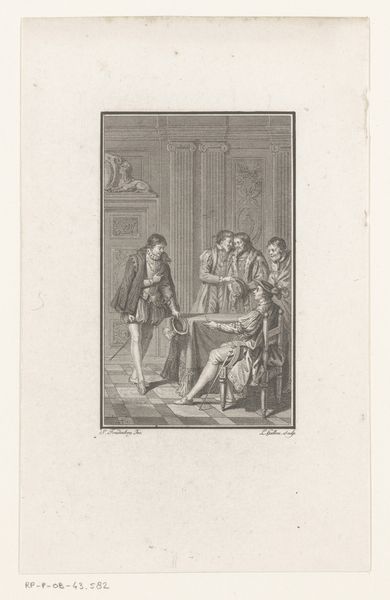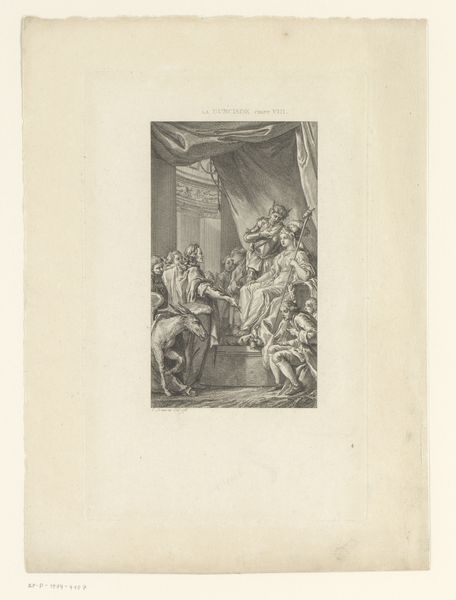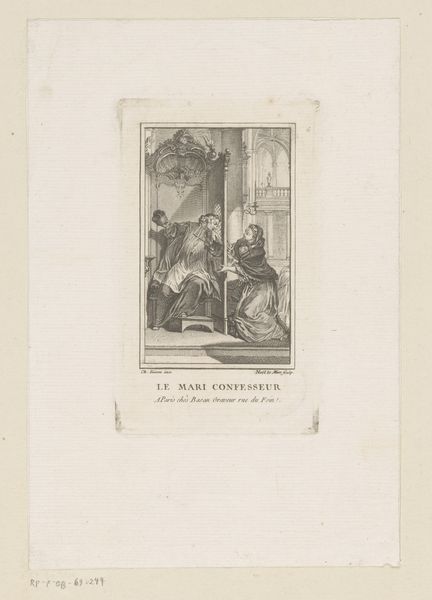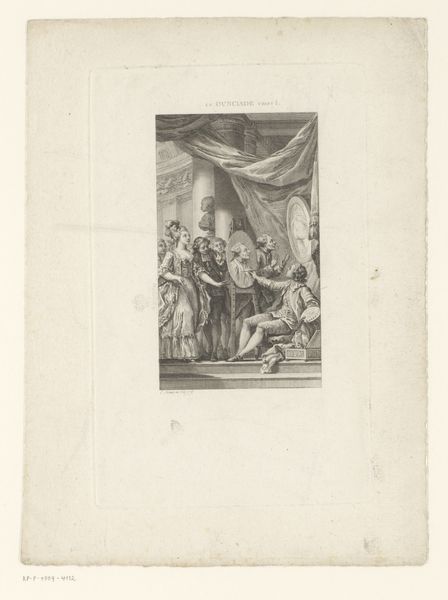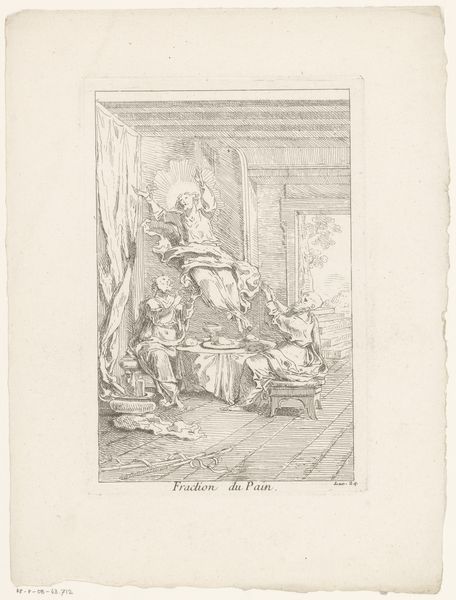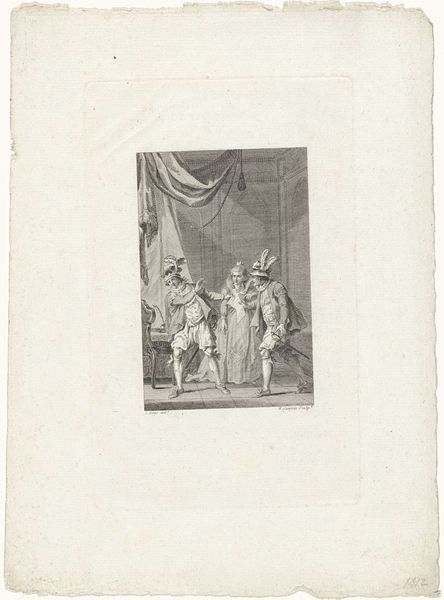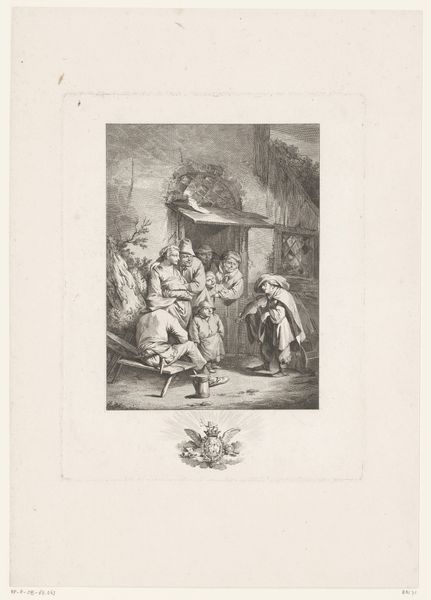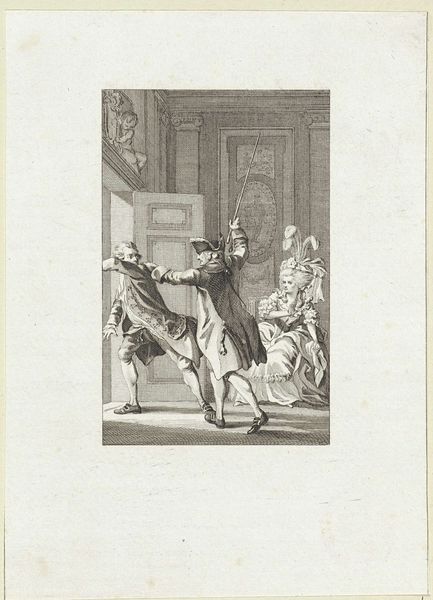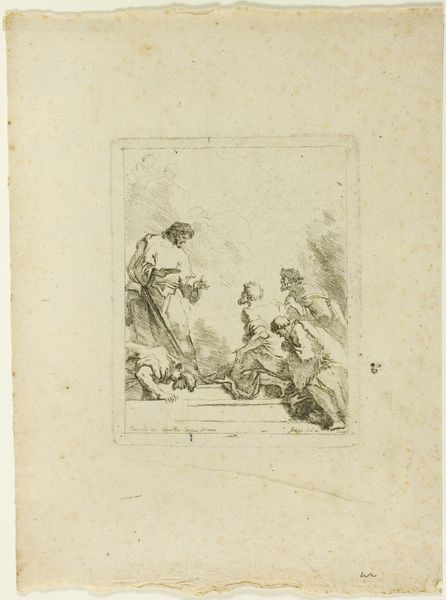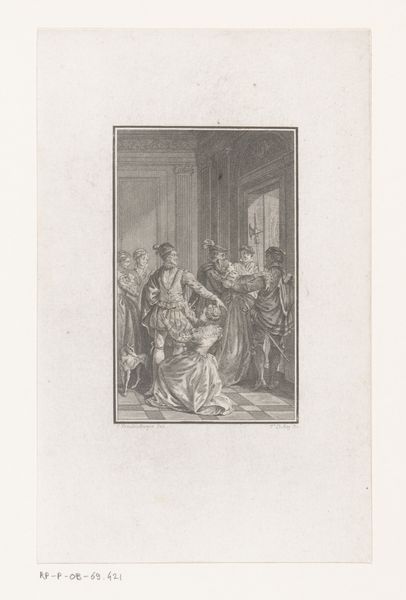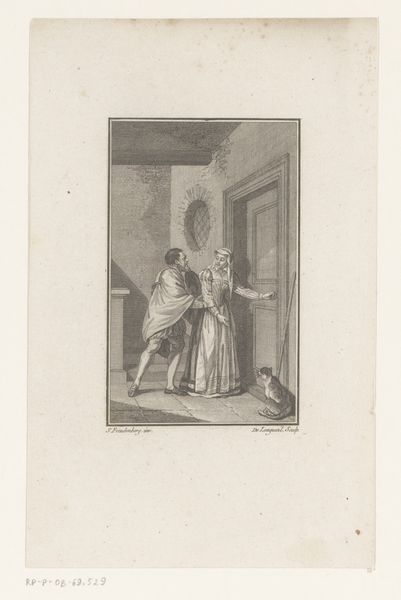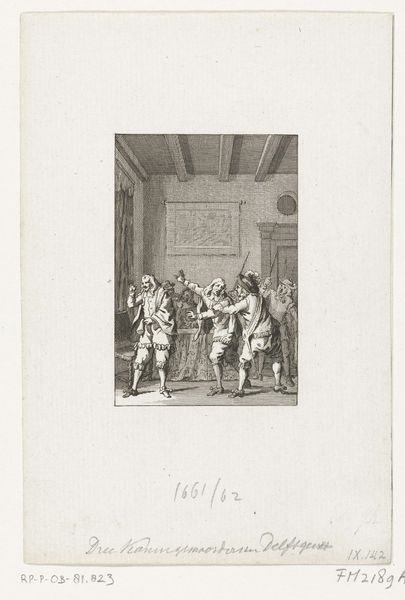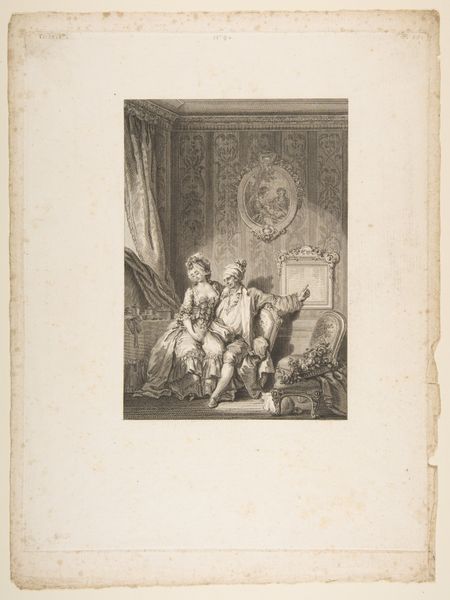
Groep mensen in een vertrek, waarvan drie zich buigen over een liggende vrouw 1750 - 1779
0:00
0:00
carlleberechtcrusius
Rijksmuseum
Dimensions: height 136 mm, width 96 mm
Copyright: Rijks Museum: Open Domain
Curator: It appears we are examining a print by Carl Leberecht Crusius titled "Group of people in a room, three of whom are bending over a reclining woman," dating from sometime between 1750 and 1779. It's quite a scene! What's your initial take on this work? Editor: It’s certainly dramatic! The high contrast creates a really heavy, almost theatrical mood. What’s striking is the disparity between the overdressed characters tending the fainting woman and the more subdued figure on the left who is lost in their own thoughts. What story do you read in the etching and the social context of it all? Curator: Let’s think about this through the lens of materiality and production. This is an engraving, a print. Consider the labor invested in the plate, the skilled hand wielding the burin. Printmaking, unlike painting, is a reproductive medium. This allows the image to be widely distributed. What could this say about the social messaging, and whom it might have intended to target? Editor: So, because it's reproducible, this image had a wider reach... Perhaps this allowed commentary on class or even gendered societal constraints to permeate among a more generalized consumer base. The production inherently connects with a certain democratizing impact that most paintings could never afford to achieve, correct? Curator: Precisely! Think about the market for prints, its relationship to burgeoning middle-class consumption, and how genre scenes depicting everyday life, or in this case, perhaps a satire of it, become desirable commodities. Does that shift your perspective on the narrative presented? What did these newly prosperous classes care about and value? Editor: Absolutely. Focusing on its production transforms it from just a scene of concern into a snapshot of evolving societal dynamics, one manufactured and reproduced for profit and social circulation. I definitely see that now. Thanks! Curator: Indeed! The way it's made heavily impacts what it means.
Comments
No comments
Be the first to comment and join the conversation on the ultimate creative platform.
